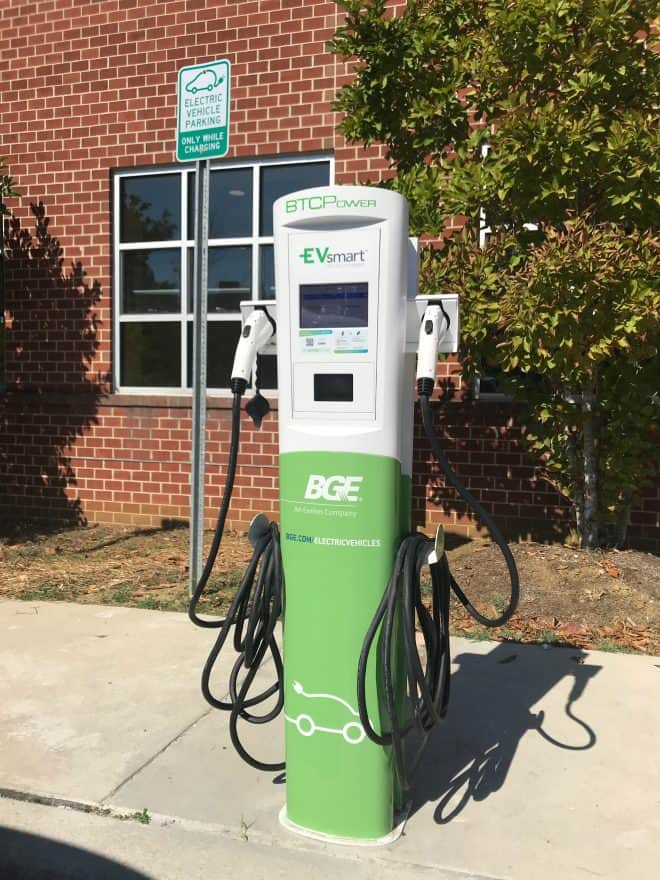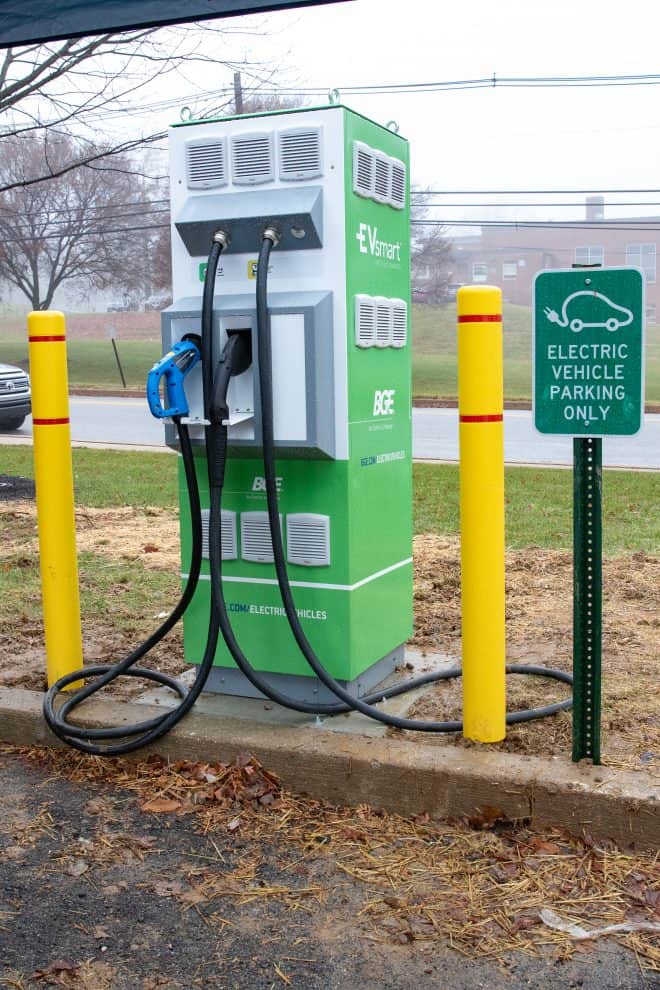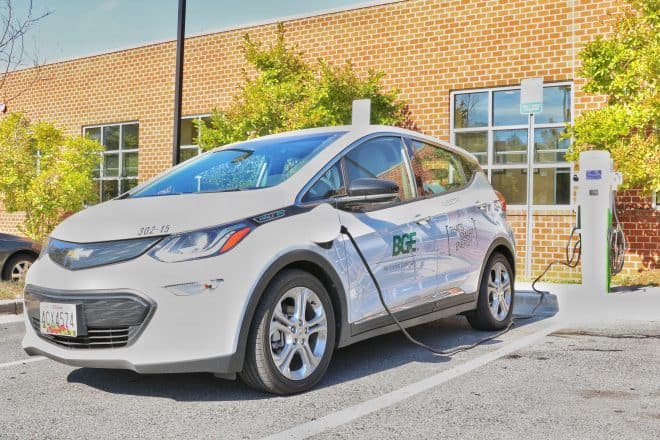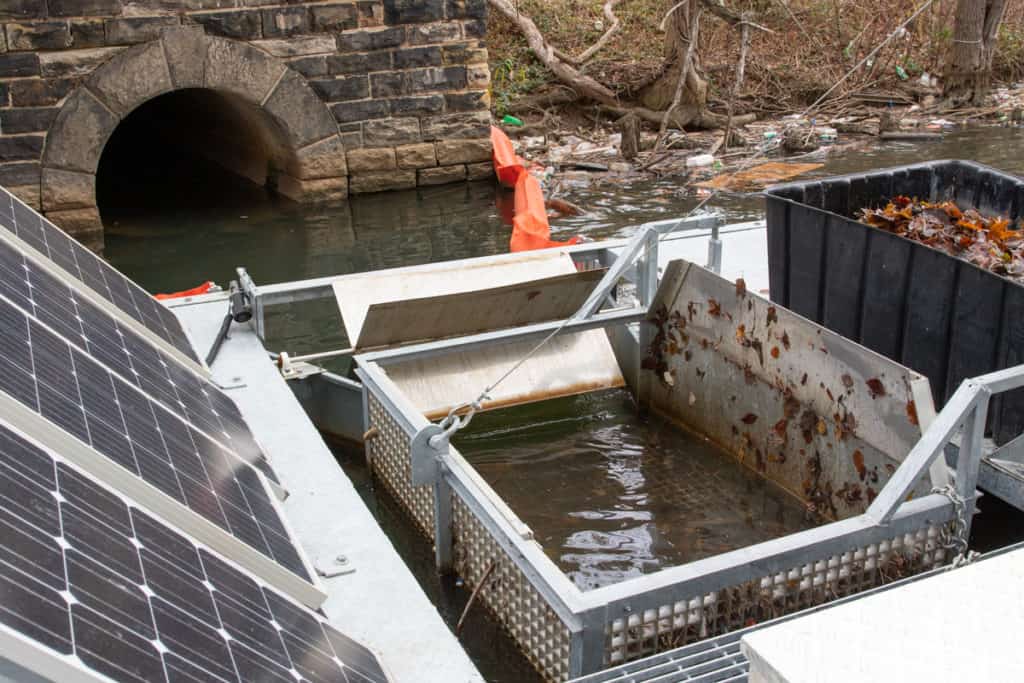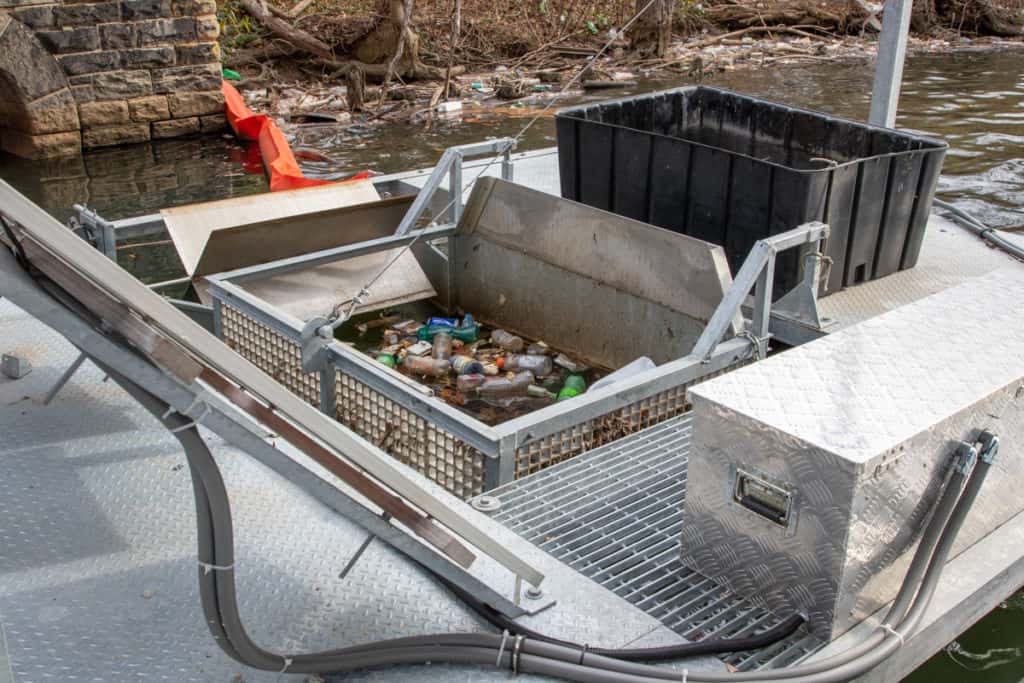BGE Goes Electric—With its Fleet of Vehicles
By Kimberly Kweder
Baltimore Gas and Electric is joining the move to combat environmental concerns over the use of gasoline-powered vehicles—putting more emphasis on the electric part of their name. “We are in a huge effort to electrify a significant portion of our fleets,” says Richard Yost, BGE spokesperson.
The company, a subsidiary of the Exelon Corporation and the state’s largest gas and electric utility aims to convert 50 percent of its fleet to electric power by 2030. The EVsmart project is also piloting the use of electric buses, excavators, trailer movers, and multiple EV charging technologies to maximize the uses for electric vehicles.
Currently, residents can see meter readers driving Chevy Bolts around central Maryland and parking vehicles at a canopy equipped with EV chargers. A BGE facility is also being charged by solar arrays when the EVs are unused and the battery’s full, Yost said.
“We’re very excited about this work,” he added.
The effort is part of a larger statewide plan to encourage all residents, not just BGE customers, to buy electric vehicles. Maryland joined seven other states in forming a task force to ensure the successful implementation of the Zero Emission Vehicles program. The ZEV program is part of the California Clean Cars Program that Maryland adopted in 2007. The state of Maryland’s goal is to reach 300,000 zero emissions plug-in electric vehicles by 2025.
The BGE charging stations were installed to help people get comfortable with access points, Yost said. More than 170 EV charging ports are ready for use and 190 more will be installed in 2021, BGE announced in January. BGE will eventually install and operate a network of 500 chargers available to all EV drivers.
EVs are just the start of BGE’s green technology goals.
Another project is cleaning litter from waterways. Employees at BGE’s Spring Gardens facility were concerned about trash in a nearby waterway, Yost said. Trash cages, otherwise known as Trash Elimination Devices (TEDs), now gobble up trash from Baltimore’s Federal Hill at two stormwater drains on the eastern bank of the Patapsco River’s Middle Branch. The trash collected from the TEDs is sent to the Wheelabrator Baltimore waste-to-energy facility across the Patapsco River from Spring Gardens. The trash cages have recovered more than 1,700 pounds of trash, according to a December 2019 BGE release.

